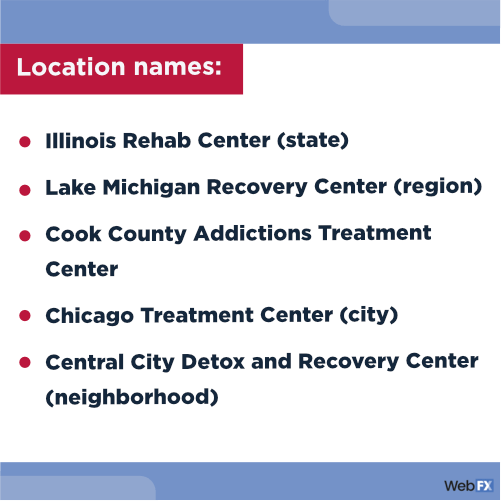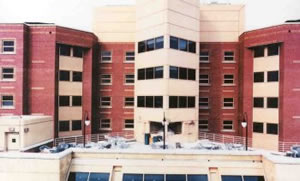Benzodiazepines are often used to alleviate alcohol withdrawal symptoms, and methadone to handle opioid withdrawal, although buprenorphine and clonidine are likewise utilized. Numerous drugs such as buprenorphine and amantadine and desipramine hydrochloride have been attempted with drug abusers experiencing withdrawal, however their effectiveness is not established. Severe opioid intoxication with significant breathing anxiety or coma can be deadly and needs prompt reversal, utilizing naloxone.
Disulfiram (Antabuse), the very best understood of these agents, inhibits the activity of the enzyme that metabolizes a significant metabolite of alcohol, resulting in the accumulation of poisonous levels of acetaldehyde and numerous highly unpleasant adverse effects such as flushing, queasiness, vomiting, hypotension, and anxiety. More recently, the narcotic villain, naltrexone, has actually likewise been found to be effective in reducing regression to alcohol usage, obviously by blocking the subjective impacts of the first drink.
Naltrexone keeps opioids from occupying receptor sites, thus hindering their euphoric results. These antidipsotropic agents, such as disulfiram, and obstructing agents, such as naltrexone, are only helpful as an accessory to other treatment, especially as incentives for relapse prevention ( American Psychiatric Association, 1995; Agonist substitution treatment changes an illicit drug with a recommended medication.
The leading substitution treatments are methadone and the even longer acting levo-alpha-acetyl-methadol (LAAM). Patients utilizing LAAM just require to consume the drug 3 times a week, while methadone is taken daily. Buprenorphine, a mixed opioid agonist-antagonist, is likewise being utilized to reduce withdrawal, reduce drug craving, and obstruct blissful and strengthening effects ( American Psychiatric Association, 1995; Medications to deal with comorbid psychiatric conditions are an essential accessory to drug abuse treatment for clients detected with both a substance use disorder and a psychiatric condition.
Which Of The Following Is The Most Common Pharmacological Treatment For Addiction? for Dummies
Because there is a high occurrence of comorbid psychiatric disorders among individuals with substance dependence, pharmacotherapy directed Drug Rehab Facility at these conditions is often suggested (e.g., lithium or other state of mind stabilizers for patients with validated bipolar affective disorder, neuroleptics for patients with schizophrenia, and antidepressants for patients with major or atypical depressive disorder).
Missing a verified psychiatric medical diagnosis, it is ill-advised for medical care clinicians and other doctors in substance abuse treatment programs to recommend medications for insomnia, stress and anxiety, or anxiety (particularly benzodiazepines with a high abuse potential) to clients who have alcohol or other drug conditions. what type of grief does and individual with addiction go through in treatment. Even with a verified psychiatric medical diagnosis, patients with substance use disorders ought to be recommended drugs with a low capacity for (1) lethality in overdose scenarios, (2) exacerbation of the effects of the mistreated compound, and (3) abuse itself.
These medications should also be given in limited quantities and be closely kept an Rehab Center eye on ( Institute of Medicine, 1990; Since recommending psychotropic medications for patients with double medical diagnoses is medically intricate, a conservative and sequential three-stage method is recommended. For an individual with both an anxiety condition and alcoholism, for example, nonpsychoactive alternatives such as exercise, biofeedback, or tension decrease techniques need to be attempted first.
Just if these do not minimize signs and grievances need to psychoactive medications be provided. Proper recommending practices for these dually identified patients encompass the following six "Ds" ( Landry et al., 1991a): Medical diagnosis is important and should be verified by a careful history, thorough evaluation, and suitable tests prior to prescribing psychotropic medications.
The What Is The Treatment For Opioid Addiction PDFs
Dose must be appropriate for the diagnosis and the intensity of the problem, without over- or undermedicating. If high doses are required, these must be administered daily in the office to make sure compliance with the recommended amount. Period must not be longer than suggested in the bundle insert or the Physician's Desk Recommendation so that additional reliance can be prevented.
Reliance advancement must be constantly monitored. The clinician also must caution the patient of this possibility and the need to make decisions regarding whether the condition warrants toleration of reliance. Documents is important to ensure a record of the presenting complaints, the medical diagnosis, the course of treatment, and all prescriptions that are filled or declined as well as any assessments and their suggestions.
One method that has actually been tested with drug- and alcohol-dependent persons is supportive-expressive therapy, which tries to produce a safe and supportive healing alliance that motivates the patient to attend to negative patterns in other relationships ( American Psychiatric Association, 1995; National Institute on Substance abuse, unpublished). This technique is generally utilized in conjunction with more comprehensive treatment efforts and concentrates on current life problems, not developmental concerns.

This http://marcoiknz899.wpsuo.com/what-kind-of-treatment-is-recommended-for-prescription-drug-addiction-can-be-fun-for-everyone varies from psychotherapy by qualified psychological health professionals ( American Psychiatric Association, 1995). Group treatment is one of the most regularly used methods throughout main and extended care phases of compound abuse treatment programs. Various methods are used, and there is little agreement on session length, conference frequency, ideal size, open or closed enrollment, period of group participation, number or training of the included therapists, or design of group interaction.

The Definitive Guide to What Is Irans Response To Addiction Treatment
Group treatment uses the experience of closeness, sharing of unpleasant experiences, interaction of feelings, and helping others who are battling with control over substance abuse. The concepts of group dynamics frequently extend beyond treatment in compound abuse treatment, in educational discussions and conversations about abused compounds, their impacts on the body and psychosocial performance, prevention of HIV infection and infection through sexual contact and injection drug use, and various other compound abuse-related subjects ( Institute of Medication, 1990; Marital treatment and family treatment focus on the drug abuse habits of the determined client and also on maladaptive patterns of household interaction and interaction (how to treatment drug addiction).
The goals of household treatment also vary, as does the stage of treatment when this method is used and the kind of household participating (e.g., nuclear family, married couple, multigenerational family, remarried family, cohabitating exact same or various sex couples, and adults still suffering the consequences of their moms and dads' compound abuse or dependence). what are some forms of treatment available to those suffering from opioid addiction?.
Included household members can assist make sure medication compliance and presence, plan treatment methods, and display abstinence, while therapy focused on ameliorating dysfunctional family dynamics and reorganizing poor communication patterns can assist develop a better environment and support group for the person in recovery. Several well-designed research study studies support the efficiency of behavioral relationship treatment in enhancing the healthy performance of families and couples and enhancing treatment results for individuals (Landry, 1996; American Psychiatric Association, 1995). Initial research studies of Multidimensional Household Treatment (MFT), a multicomponent family intervention for parents and substance-abusing adolescents, have actually found improvement in parenting abilities and associated abstinence in teenagers for as long as a year after the intervention ( National Institute on Drug Abuse, 1996). Cognitive behavior modification attempts to modify the cognitive procedures that result in maladaptive behavior, intervene in the chain of occasions that cause drug abuse, and then promote and enhance essential abilities and behaviors for achieving and keeping abstinence.
Stress management training-- utilizing biofeedback, progressive relaxation techniques, meditation, or workout-- has become incredibly popular in substance abuse treatment efforts. Social skills training to improve the basic functioning of individuals who lack normal communications and interpersonal interactions has actually also been shown to be an effective treatment technique in promoting sobriety and decreasing regression.